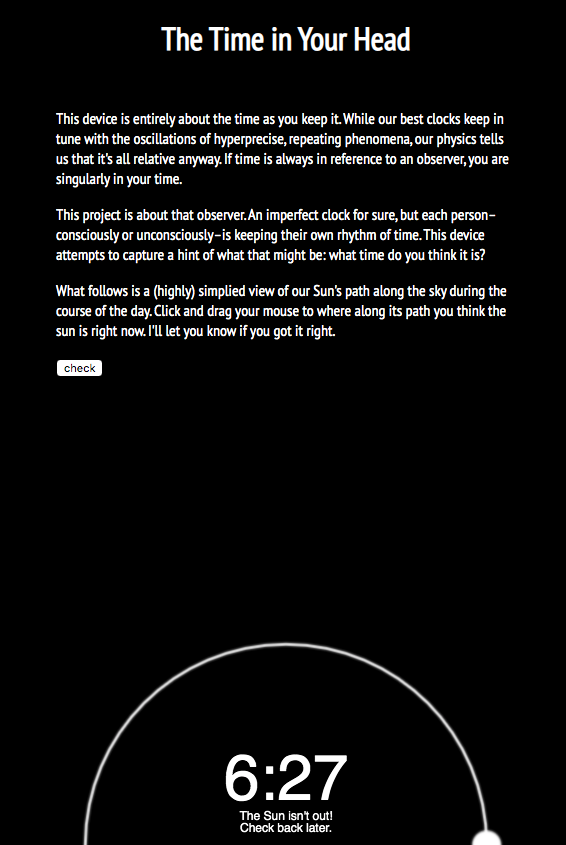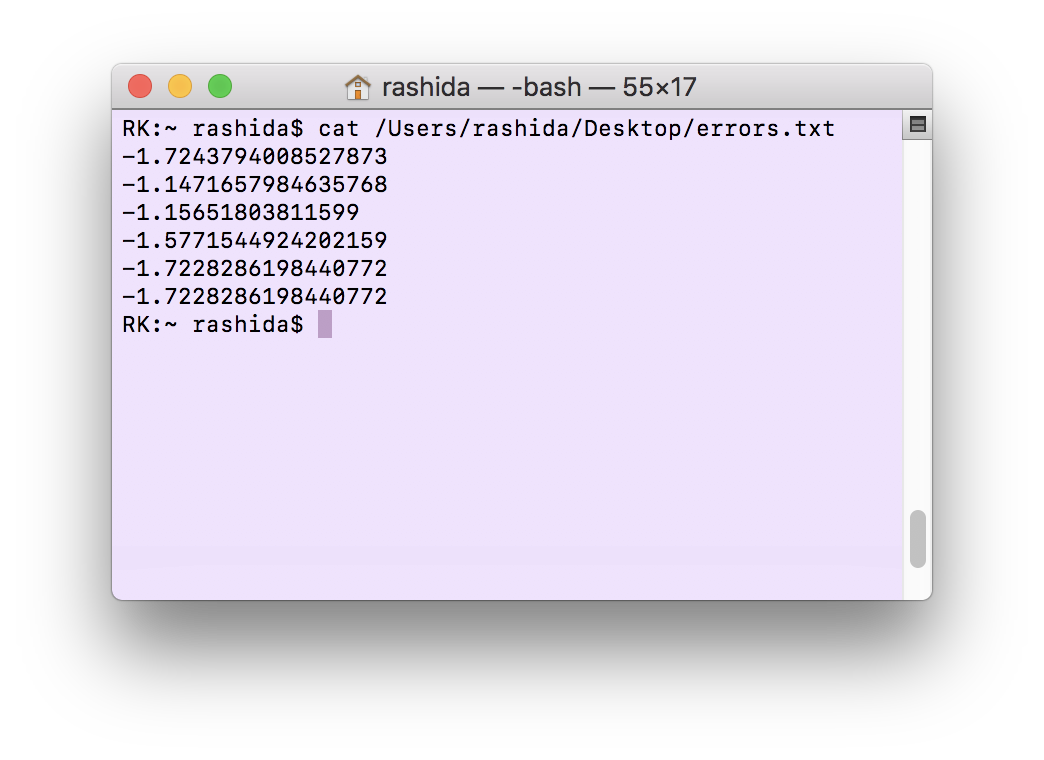The Time in Your Head is about finding and tuning your sense of time, as guided by the sun. The interface can be found below:

LIVE –– CODE
The site produces an error log when 6 attempts at guessing the sun’s position has been made and produces a simple log, as errors.txt.

How did you think about the act of collecting data in this work? What relationship to the environment does your concept imply?
The project prompts the user to attend to their inner sense of time as it relates to environmental cues that may usually be ignored in favor of digital devices. It uses a digital interface to redirect the user’s attention back into the real world and to their own interior life (rather than continuing to attend to primarily digital concerns). In this manner, the digital measuring device attempts to subvert the conditions of its existence and propose what is perhaps a quaintly, idealistic (but important) possibility: our digital devices do not have to erode our interiority, but can support it.
What artists or themes were you thinking about as you formulated the idea?
I was primarily concerned about our relationship to time, and was inspired by works from the CW&T studio, and many of the readings we have been undertaking in Jeff Federssen’s Time class.
How did you use site? How did you use technology? How did you choreograph the audience? Did you utilize interaction and why? Who (creator, audience, other lifeforms) has agency in this work and who doesn’t?
The site is everywhere there is sun. It is arguable the mind of the user. The project is more strongly related to a when: the development of time sense it encourages must occur during the day time. The application allows the user to “guess the time throughout the day” and then save their error report, which they can examine for improvement.
What open questions did you have going in? How did making the work change or address these questions?
I am curious whether this software device is capable of improving one’s time sense — this question remains unanswered and can only be revealed through extensive use.
What surprised you about this task?
The surprising parts of this task was how hard it is to guess the time – I always thought I had more daylight hours left than I did.
If you were to do this again, what would you change to clarify or extend?
There are some technical items to fix, in terms of functionality. I would also consider building out a physical interface.
